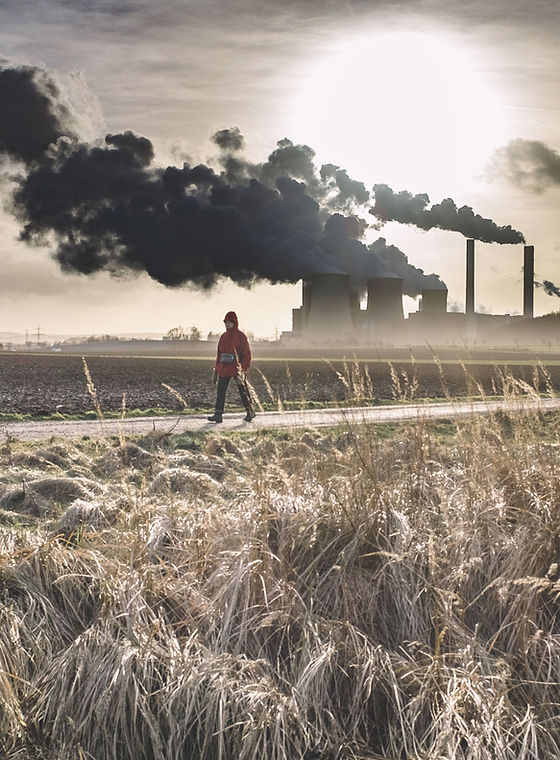
About Pollution
The Miriam Webster Dictionary defines pollution as “the action of polluting especially by environmental contamination with man-made waste.” The key word here is man-made. Since the pollutants are mostly man-made, it means that man can stop it too.
National Geographic identifies the different kinds of man-made pollution to be
Land or Soil Pollution.
Water Pollution.
Air Pollution
Noise Pollution
Light pollution
“Earth provides enough to satisfy every man's needs, but not every man's greed.”
Mahatma Gandhi

Land Pollution
Land pollution is a serious problem that impacts everyone on this earth. The definition of land pollution is the destruction and contamination of the land through the direct and indirect actions of humans. Every year one American produces over 3500 pounds of hazardous waste. We throw away more than 250 million tons of municipal solid waste and most of the waste came from residential homes.
Some causes are:
Deforestation and soil erosion
Agricultural chemicals
Industrial waste
Landfills
Some effects are:
Ground water poisoning
Loss of topsoil
Shifting habitats of animals
Increased risk of wildfires

Water Pollution
Water is scarce as it is. We are harming this scarce resource by dumping plastic into our oceans. As per UNEP (United Nations environment program), more than 8 million tonnes of plastic leaks into the ocean each year – equal to dumping a garbage truck of plastic every minute. By 2050, the oceans will contain more plastic than fish by weight.
Plastic pollution poses one of the biggest known threats to the ocean, influencing all ecosystems from beautiful coral reefs to abyssal trenches, eventually accumulating in our own food.

Air
Pollution
According to United Nations, “air pollution is one of the leading avoidable causes of disease and death globally with 4.3 million deaths occurring each year from exposure to household air pollution and 3.7 million deaths each year attributed to ambient air pollution, at a high cost to societies.” But what is air pollution?
According to CBS news, “The air we breathe in many cities is polluted by driving cars and trucks; burning coal, oil, and other fossil fuels; and manufacturing chemicals. Millions of people live in areas where urban smog, caused by vehicle exhaust and industrial processes or wildfires. While often invisible, pollutants in the air create smog and acid rain, cause cancer or other serious health effects, diminish the protective ozone layer in the upper atmosphere, and contribute to world climate change.”

Interview with Professor Saunders
Professor Janice Saunders is Science Engineering Technology (SET) Agent & 4-H Teen Café Lead at Rutgers University.
Tell us about your work related to global warming.
McDonnell: I do a lot of education and outreach about climate change. We host an annual event called the Climate and Environmental Change Teen Summit where young people learn about climate change and do community service projects that help others learn about climate change in their communities.
In your words, what is air pollution and how is it linked to global warming?
The key driver for climate change is the increase of CO2 in the atmosphere from the burning of fossil fuels. Here are three great resources to help you learn more!
https://www.youtube.com/watch?v=HK8LLWSIIm4

Noise
Pollution
Noise is unwanted sound. Noise pollution has a harmful effect on human, plant and animal life. According to American Speech language-Hearing Association (ASHA), sounds at 85 dBA can lead to hearing loss over extended hours. Normal conversation is about 60 dB, a lawn mower is about 90 dB, and a loud rock concert is about 120 dB. As increased noise levels are leading to deafness, sleep disorders, cardiovascular diseases, communication problems and increased stress amongst humans. Highway traffic, aircraft, factories and construction sites, in that order, generate the most annoying noises afflicting people in Europe and North America, a United Nations report says. Noise disrupts the natural rhythm of life and is therefore one solid pollutant.
As per https://www.conserve-energy-future.com/causes-and-effects-of-noise-pollution.php, the factors causing noise pollution are poor urban planning, social events, transportation, construction, and household chores

Light
Pollution
Light pollution is defined by the dictionary as the “brightening of the night sky caused by street lights and other man-made sources, which has a disruptive effect on natural cycles and inhibits the observation of stars and planets.”
Did you know that birds get confused about day and night because of light pollution? It disrupts sleeping patterns of all life, not just our own.
Here is a list of the different types and sources of light pollution:
1. Over-illumination: This is caused by misuse of lights. Lights that are left on, or even street lamps that are not adjusted for daylight savings time, can cause millions of barrels of oil to be wasted.
2. Glare: Glare is a two-fold problem in which lights are reflected off surrounding surfaces so that the light scatters and causes vision problems.
3. Light clutter: Light clutter is a uniquely man-made issue and it stems from poor placement design. A cluster of business lights, or streetlights, can create a contrast illumination that interferes with night vision and illumination. It can also be strong enough to throw off the natural nocturnal systems of animals.
4. Sky Glow: The light that is escaping from street lamps, signs, homes and businesses goes up to change the quality of light in the atmosphere, and it bounces back down to the city from the atmosphere. It can affect natural growth patterns, and the ability of planes to navigate at night too.
5. Light Trespass: This refers to unwanted light entering someone’s property and is illegal.

